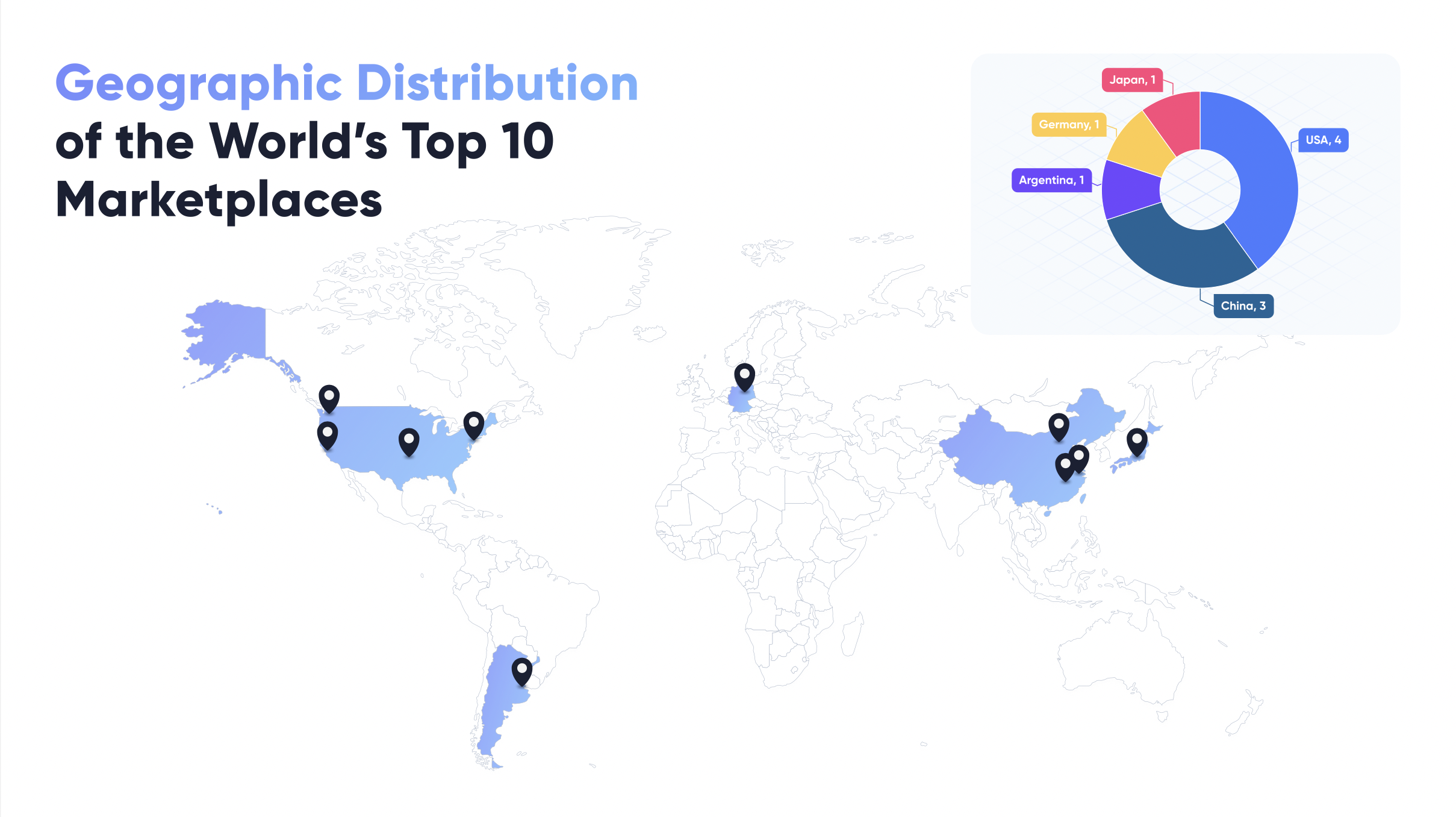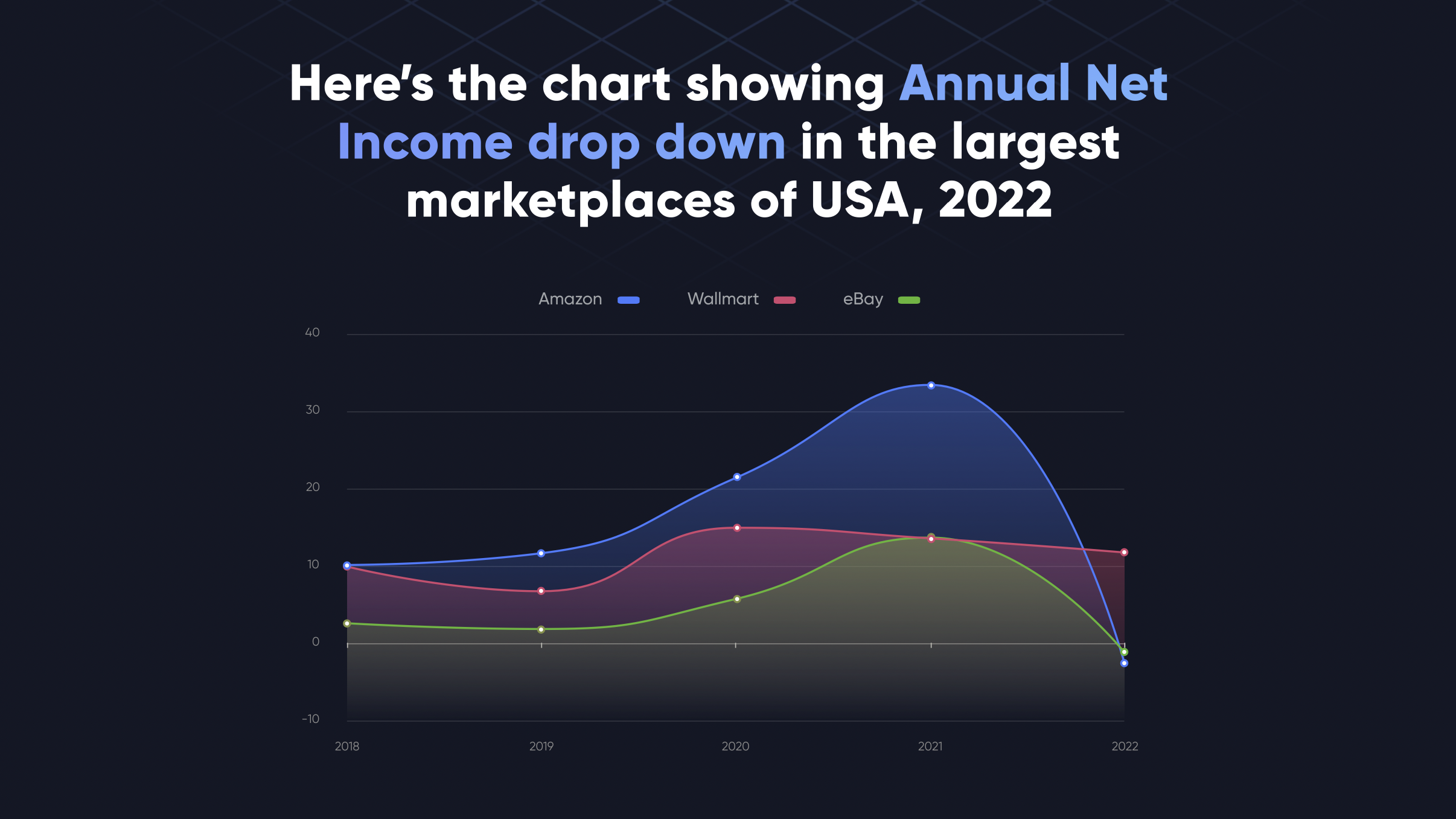Online Marketplaces Shakeup: Global Giants Slow Down, Niche Players Speed Up
According to Forbes, global online sales are expected to hit a massive $6.3 trillion by the end of 2023. Looking a bit further to 2026, around 24% of all shopping is predicted to happen on the Internet.
Despite a slowdown in 2022 and 2023 for major online marketplaces, the global e-commerce explosion we’ve seen in recent years isn’t slowing down at all—it’s a sign that more and more people are choosing to shop online.
By 2026, around 24% of all shopping is predicted to happen on the Internet.
In the upcoming e-commerce landscape, a noteworthy trend is on the horizon: the ascent of niche marketplaces. These platforms are distinct for curating a specialized selection of products tailored to specific audience preferences.
The appeal lies in their capacity to deliver a more personalized shopping experience, catering to the unique needs of customers. Moreover, these niche marketplaces empower smaller businesses, allowing them to stand on equal ground with larger counterparts.
It’s an evolution that brings a touch of personalization to online shopping, providing consumers with a more tailored and diverse array of choices.
ℹ️ What is a niche marketplace? Unlike big players like Amazon or eBay, niche marketplaces are all about specialization. They zoom in on specific products, industries, or target audiences, curating a more tailored selection for customers. For instance, a niche marketplace might exclusively offer organic and natural skincare products, creating a more intimate shopping experience.
In this article, we’ll walk you through the online marketplace shakeout: how and why niche marketplaces are rising and big players like Amazon are faltering. The analysis is based on our recent World’s Top 10 Marketplaces report.
Methodology: How We Analyzed and What We Analyzed
To get the lowdown on the global marketplace scene, we dug deep using a step-by-step approach. We used four methods to evaluate the online marketplace landscape.
1. Data Collection. We collected data from various sources to understand what makes top global marketplaces tick. From market share and revenue to employee numbers and active users, we gathered the facts that matter.
2. Finding Trends. We crunched the numbers to uncover trends and patterns in the global marketplace game, decoding the data to see what’s shaping the industry.
3. Competitive Analysis. We pitted the top 10 global marketplaces against each other, looking at what makes them strong or weak. Plus, we checked out the competition between the big players and the rising niche marketplaces.
4. Feature Outlook and Recommendations. Based on what we found, we’re not just pointing out trends. We’re also giving you a sneak peek into the future. Our report includes tips on what features and trends will likely drive the global marketplace industry forward.
Marketplaces analyzed
↓
| Marketplace | HQ | Countries | Products | Year of Est. |
|---|---|---|---|---|
| Amazon | Seattle, WA | Worldwide | Various | 1994 |
| Alibaba | Hangzhou, CN | Worldwide | E-commerce, retail, AI, cloud | 1999 |
| eBay | San Jose, CA | Worldwide | Various | 1995 |
| Walmart | Bentonville, AR | Worldwide | Retail | 2009 |
| JD.com | Beijing, CN | China, Indonesia, Thailand | E-commerce, retail, AI, logistics | 1998 |
| Rakuten | Tokyo, JP | Japan, Worldwide | E-commerce, retail, banking, media | 1997 |
| Etsy | Brooklyn, NY | Worldwide | Handmade goods, vintage items, craft | 2005 |
| Mercado Libre | Buenos Aires, AR | Latin America, Portugal | E-commerce, retail, fintech | 1999 |
| Pinduoduo | Shanghai, CN | China | Social e-commerce, retail | 2015 |
| Zalando | Berlin, DE | EU | Fashion, shoes, accessories | 2015 |

Big Players Financial Analysis: Decoding the Slowdown
Over the past five years, the leading global marketplaces have enjoyed steady growth in annual revenue. More buyers and sellers joined in, they started selling in more places, and technology helped it all go up.
However, a recent dip in market cap among major players signals a notable slowdown in the eCommerce juggernaut. The overall value of these big marketplaces has taken a hit, hinting that the crazy growth in online shopping might be calming down. It’s like they’re not growing as fast as they used to.
During the pandemic, online shopping exploded, but by 2021, it cooled off. People started going back to regular stores, and their shopping habits went back to normal.
Despite a surge in annual gross profit for top marketplaces, a closer look at the financial landscape reveals a substantial drop in net income for major American players in 2022. Amazon, for instance, reported a staggering $2.7 billion decrease compared to the previous year.
According to Brad Jashinsky, director analyst at Gartner’s marketing practice, Amazon is struggling because people are buying less stuff. Why? Because things are getting more expensive (like gas and energy), and people aren’t as excited about shopping as they were before.
“Amazon has been dealing with a decrease in consumer demand because of the continuing impacts of broad-scale inflation, heightened fuel prices, rising energy costs, and consumers spending starting to shift back to services like restaurants and travel, which have really slowed consumer spending in a lot of areas.”
Amazon made $2.7 billion less money than the year before.

Contributing Factors to E-commerce Slowdown:
- Inflation peaks: Everything is getting more expensive.
- Consumer sentiment dips: People are not as happy about shopping.
- Rise in in-store sales: People are going back to physical stores.
- Reduced spending: People are saving more money compared to 2021.
Experts say there’s still a lot of room for online shopping to grow. The shops that did well online during the pandemic will keep using smart strategies to talk to customers and sell stuff directly. So, the eCommerce world is changing with the focus on more personalized shopping and niche marketplaces.
Niche vs. Global Marketplaces: Trends and Expectations
In the competitive landscape of 2023, some big names like Amazon, eBay, and Etsy have seen a financial downturn over the past year. Surprisingly, this might be a golden chance for entrepreneurs to step in and create their own niche marketplaces.
Why? Because niche marketplaces, focusing on specific products or services, have been gaining popularity as people seek more personalized and specialized offerings.
Why Experts Love Niche Marketplaces?
Forbes sees niche marketplaces as the future of online shopping. They allow businesses to stand out from the giants and offer a personal touch to customers, something highly valued in today’s market where authenticity and uniqueness matter.
Digital marketing guru Neil Patel points out that niche marketplaces face less competition than the big e-commerce platforms. This opens the door for smaller businesses to enter the market and carve out a space in a specific niche. Flexibility is another plus—niche marketplaces can quickly adapt to changing trends.
“Niche marketplaces give you the opportunity to target your service offerings to the right audience—without having to compete with other non-related products and services. As the marketplace only promotes services you offer, your conversion rates are more likely to improve. This ultimately results in a boost in revenue.”
Sprout Social highlights key trends that niche marketplaces can ride on, such as the boom in social commerce, the surge of mobile shopping, and the growing demand for sustainable products. By aligning with these trends, niche marketplaces can outshine larger platforms.
A Chance for Entrepreneurs
Big online marketplaces are having money troubles, and this is a golden opportunity for people wanting to start niche marketplaces. Experts say these specialized marketplaces are the future of online shopping.
This is a big break for small businesses to stand out by giving customers a more personal and adaptable shopping experience. It’s not just a change—it’s a clever move toward a future in online shopping that goes with the flow of trends.
There is much more to explore in the full report
“The World’s Top 10 Marketplaces: Dynamics and Trends”.
Download the PDF for free.
↓

About the report maker:
Anastasiya Lyakhova, a Competitor Analysis and Customer Development expert at CS-Cart, is a dedicated explorer of the global e-commerce scene. Passionate about deciphering market trends, she conducts insightful interviews with entrepreneurs and experts to get straight to the heart of industry dynamics. Her role at CS-Cart involves shaping a nuanced perspective on the competitive landscape and customer behavior in the evolving digital marketplace.
Connect with Anastasiya on LinkedIn
Yan Anderson is the Head of Content Marketing at CS-Cart with over 10 years of experience in the eCommerce industry. He's passionate about explaining complicated things in simple terms. Yan has expertise in building, running and growing eCommerce marketplaces. He loves to educate people about best practices, new technologies, and trends in the global eCommerce industry.



